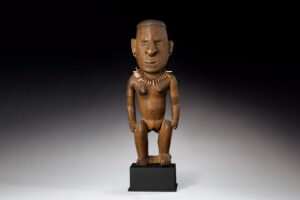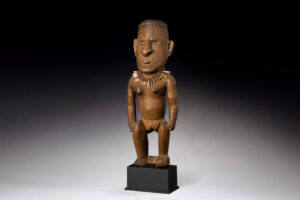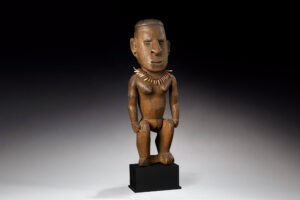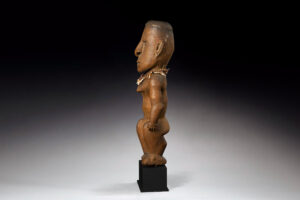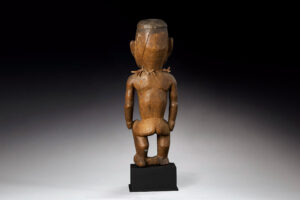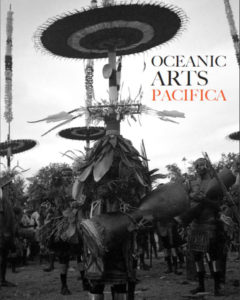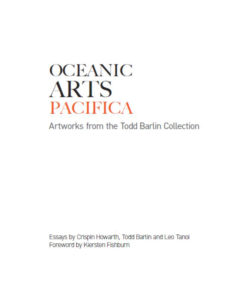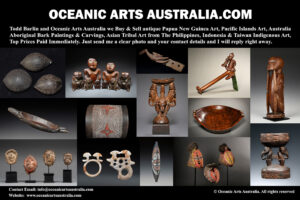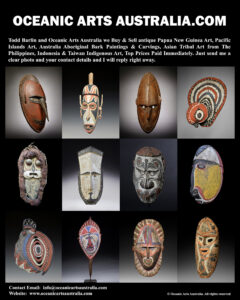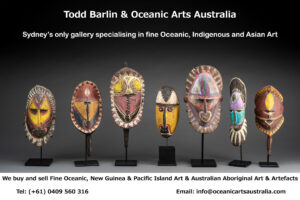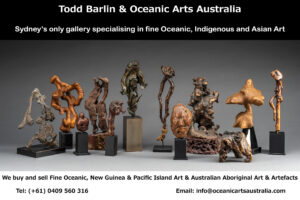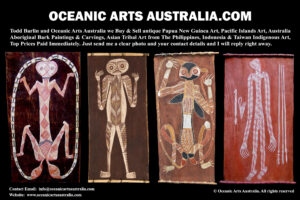A Superb New Guinea Ancestor Figure Murik Lakes East Sepik Province Papua New Guinea
| Collection No. | TB-2068 |
|---|---|
| Size | Height 42cm Without the stand |
A Superb New Guinea Ancestor Figure Murik Lakes East Sepik Province Papua New Guinea
This beautiful old female Ancestor Figure is from the Murik Lakes area in the East Sepik Province of Papua New Guinea and dating from the early 20th Century.
Beautifully carved in the form of a strong young woman in full health, with a warm expression on her face. She is standing facing forward with her arms held to her sides with hands resting on her hips, she is wearing a dog’s teeth necklace around her neck which is an important traditional currency & bridal dowry in New Guinea. Both her ears & nose are all pierced, and once held fibre attachments. The figure has a deep honey-colored patina from long handling.
In the Sepik River societies, each community had carved wood figures which were associated with specific ancestors, these were important ceremonial figures each figure had its own personal name. Ancestor figures were an important part of a community’s spiritual well-being, they offered protection from malevolent forces and help to ensure fertility for gardens growing large yams and taro as food sources.
Kathleen Barlow In the Journal de la Société des Océanistes 146 | 2018 explains further
“Kandimboang is a generic term for carved wooden figures in both male and female human form. They vary greatly in size from under 6 inches in height to standing figures 5-6’ tall or more. The smaller ones may be gai masok, but larger ones are also used to invoke spiritual power from specific male and female spirits, mythic figures, and ancestors in curing rituals in the men’s house, and at initiations. Jari is an important female mythic figure in the region who came to the Murik Lakes from the West bearing outrigger canoe technology and gave knowledge of how to give birth to women (Lutkehaus, 1995; von Poser, 2014; Z’Graggen, 2011). These objects are kept in the women’s (Tamoane, 1977) and men’s houses – the former being a larger-than-usual dwelling house and deployed on certain occasions to call forth the spiritual presence and influence of the entities whom they represent.
Because kandimboang require skill and conscious intention, and even spiritual inspiration to create, they are treated with respect and care. Figures with a long, hooked noses are spirit figures, while those with more human noses are meant to represent actual humans or spirits in their human form. Nevertheless, apart from their deployment under certain circumstances (offerings made, words spoken to call forth presence and empowerment), the wooden figures are neutral material objects much of the time. On the other hand, to avoid unintentionally or negatively bringing forth their power, custodians of named figures keep them in special bags or bark containers in secluded places (such as the rafters or the back of the house). Their beneficent influence is dependent on treating them with respect, which includes refurbishing their ornamentation for proper display and offering them food, tobacco, and betel nut. The figures are brought out on occasions when their support, as representatives of ancestral and contemporary spiritual presence, is important to the success of an undertaking “.
Provenance: The Todd Barlin Collection of New Guinea Oceanic Art

